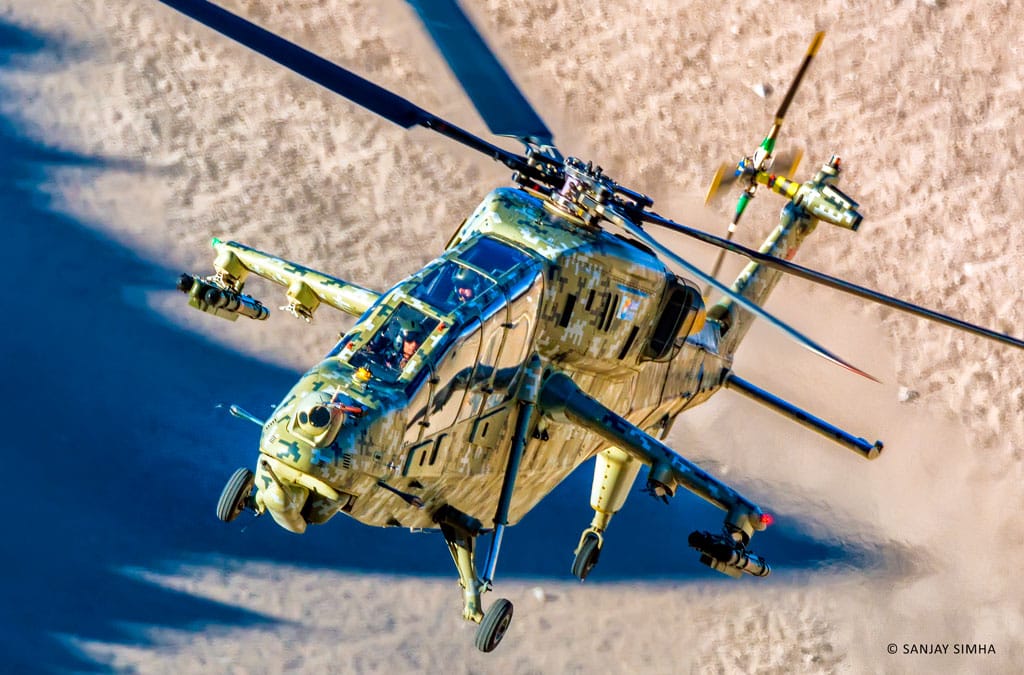
Freshly confident that an elusive contract for India’s first attack helicopter is in sight, India’s Hindustan Aeronautics Ltd (HAL) has ramped up production of the Light Combat Helicopter (LCH) in Bengaluru. With crucial — and sticky — price negotiations complete, HAL is finally reassured that this one’s in the bag.
If HAL is right, and the contract is closed this year, it will be a full four years after the Indian MoD cleared the acquisition in November 2016, a long time for a program that’s been waiting for years, but fleeting by traditional Indian contracting standards.
Speaking in an exclusive interview to Livefist, HAL chairman R. Madhavan said, “That (the order) will come very soon. We have concluded price negotiations. We are now awaiting financial sanction. By the end of this year, we should see the initial order for 15 aircraft. After that we expect orders for more than 150. In fact, assuming we’re receiving the order, we’ve already begun production of five new aircraft immediately. This will allow us to deliver the aircraft earlier than planned, once the order is confirmed.”
Watch the full interview with HAL’s chairman at Livefist’s YouTube channel, here.

While the Indian Air Force will be the LCH’s launch customer, the Indian Army will receive most of the 165 planned airframes. The two services still haven’t fully sorted out who must operate armed helicopters, with even foreign imports of the AH-64E being split between the two services for now.
The first LCH order has been tantalisingly close but just out of reach for a few years now, though it must be said that HAL is now for the first time convinced that contract signature will take place before the year is out. It has been a tense wait.
Speaking to Livefist last February, HAL’s chief helicopter test pilot Wing Commander Unni Pillai said, “We are awaiting contract signature. The delivery of the first 15 can happen almost immediately. We’ve already made structures for 9 inhouse using HAL money. They only need to be equipped. Will take 6 months to deliver and we can do it before the stipulated time in contract. Will be the first time a delivery is happening well in advance to the users. We expect a total order for 165 airframes. Looking at foreign market very closely too. Very few countries make a cost-effective attack helicopter — few countries can afford the capability. Will compete with China too.”
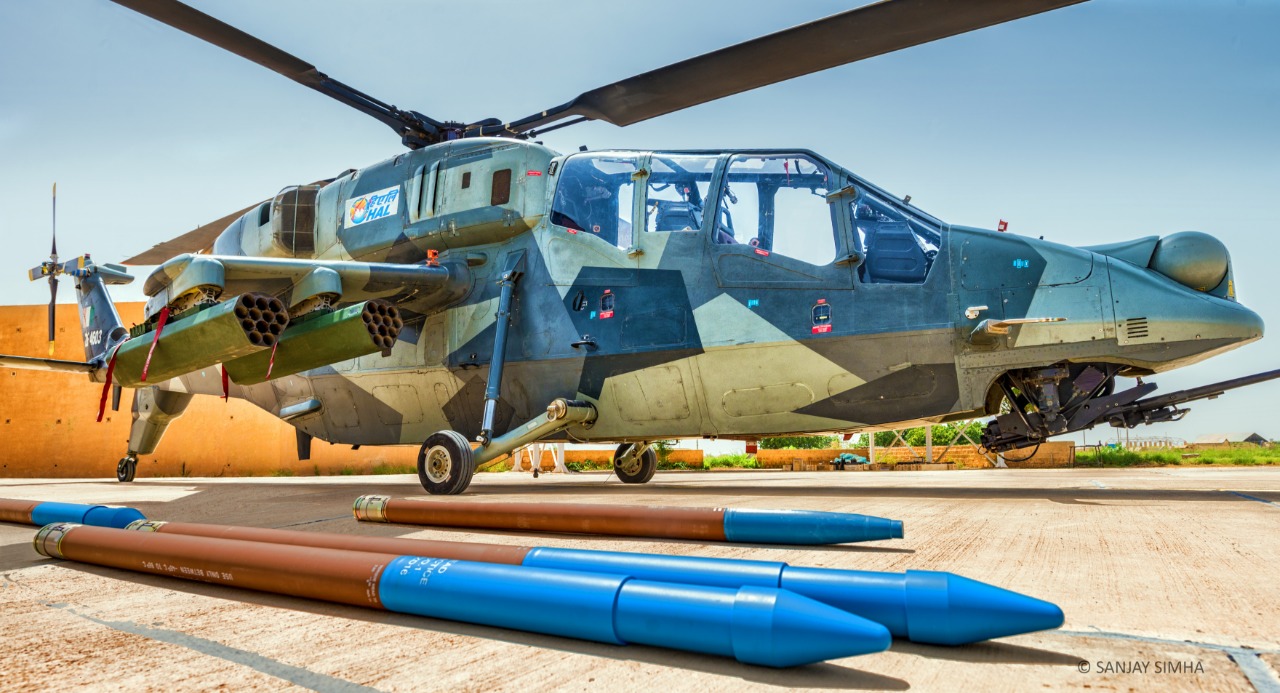
Unlike virtually every other attack helicopter in the market, the LCH’s biggest designed-in capability is high altitude performance, a key requirement from the aircraft. Prototypes of the helicopter have been deployed repeatedly over the last decade in the super-high altitude areas of Ladakh and the Siachen Glacier.
LCH project pilot Group Captain Hari Nair tells Livefist, “This has to be seen against the backdrop of the Kargil War, it was back then when we had attack helicopters which could not reach the altitudes because of performance limitations. That is when the Air Force wanted a weapon system with the capabilities of reaching those altitudes and that was the backdrop to the requirements that were framed for this helicopter. That’s the origin, and we developed using the transmission of the ALH. They have much more than this, they have got improved aerodynamics. There was a challenge in intergrating the wings on the helicopter and retaining the overall performance and essentially the focus was on high altitude. High altitudes in the sense that, much more than what the western helicopters are capable of. Altitudes in the axis of 15000-17000 feet, operating and firing weapons. So the entire focus was to develop an attack helicopter to operate in those higher altitudes.”
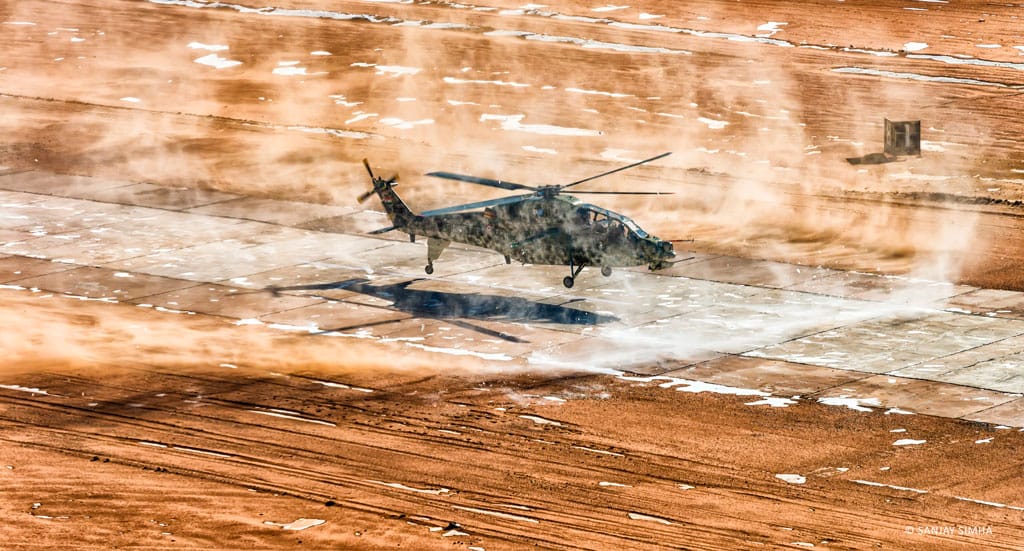
Group Captain Nair adds, “As a pilot when you fly in that terrain, I am used to flying in certain other helicopters which are still in service with the Indian Air Force. The performance of the LCH gives tremendous freedom of operations. Freedom in the sense of the flight envelop, handling, characteristics, it is very forgiving. It has got a very high transit speed compared to the other helicopters in service today.”
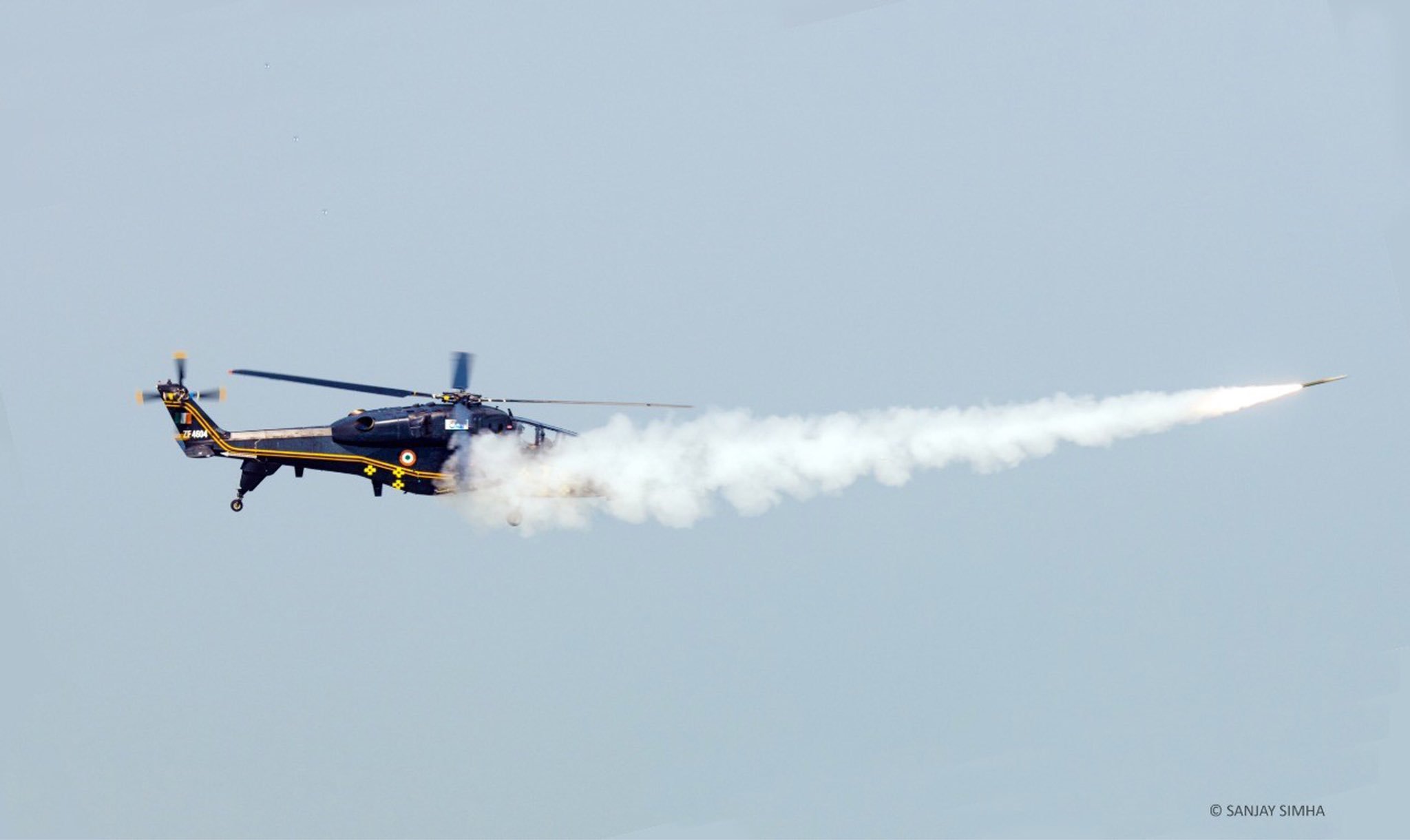
At the testing level, weapons trials have been successful, though bureaucratic hurdles have left the LCH (and the Dhruv-based Rudra) incompletely armed. Last year Livefist detailed the inexplicable path that has left the LCH ironically armed with launchers, but without weapons to fire from them. Armed with a chin-mounted 20mm Nexter M621 cannon and 70mm rocket pods, the LCH has ATAM (air to air Mistral) launchers, and will deploy the Dhruvastra twin launcher for the indigenous HELINA anti-tank guided missile. An ongoing effort has also sought to arm the LCH with a foreign-made anti-tank missile, either the Rafael Spike ER or MBDA PARS L3, though that hasn’t resulted in a decision or next steps.
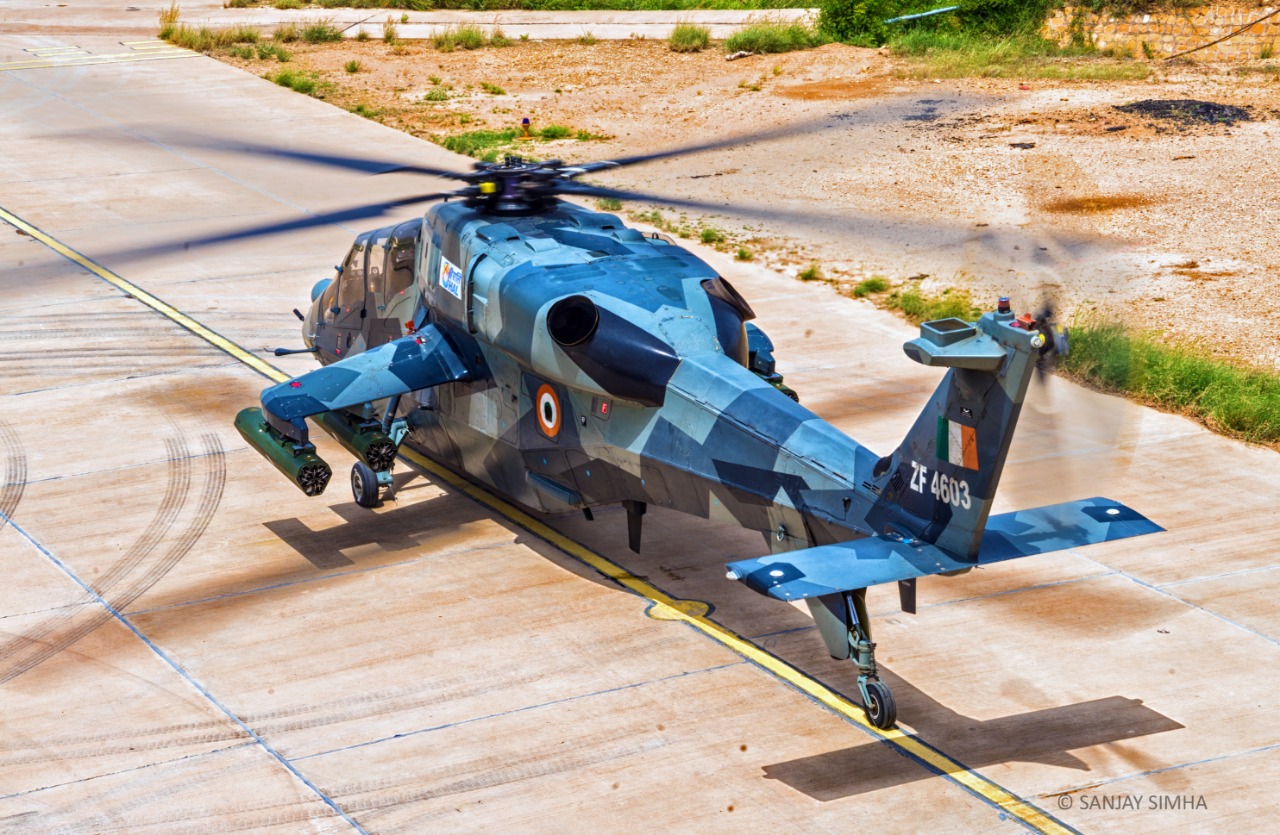
Manufacturing and fabrication work has ramped up at HAL’s facility in Bengaluru. In February this year, right before the Covid19 pandemic hit, HAL inaugurated the LCH final assembly hangar.
Watermarked Photos Courtesy Sanjay Simha

Kindly publish comparative article of indigenous indian and Chinese fighter helicopters.
And India’s availability and requirements of helicopters to tackle both pakistan and China.
HAL must integrate Hydra-70 Rocket Pods & AGM-114 Hellfire Missiles with LCH because Apache Helicopters utilises the same weapons.
This can allow greater weapons commonality between both Attack Helicopters.
I really hope that HAL LCH is given a 2 additional Hard points at Wing tips to integrate Short range Air-to-air Missiles like Python, R-73, AIM-9, AIM-92 etc.
Short range Air-to-air Missiles can allow HAL LCH to effectively target UAVs & Helicopters be it Utility or Attack versions in any foreseeable confrontation.
Of course, now HAL has to deliver on time and budget. I hope they can for once. I really do.
However, their record on the LCA MK1 is not encouraging. Supposed to have delivered the first 40 by 2016: only 16 so far.
It seems they can talk the talk but can’t walk the walk. Like the OFB, they get a free get out jail card each time they miss delivery or a product that doesn’t help users win the war.
HAL is a major factor (along with the MOD) in the decline of the IAF. Thanks to them we send our young men/women into battle with Vampires against F-86 Sabres with sidewinders in 1965, and SU 30 MKIs with useless R77s against Block 50 F16s that lock in with AIM 120 C5s.
Good as an employment scheme for unionized underachievers, HAL is a national security threat to the Indian state. Time the GOI split them up and privatized them
Just 4 years to close a contract between Indian MOD and the PSU HAL. Amazing, simply amazing. I hope we can become “atmanirbhar” by the year 2320.
Requirement started with kargil war – 1999 – I m @ 10th class
2006, the Indian government decided go with LCH’s development – started working (with 1 year exp)
First flight – 2010 – looking for marriage
2012 began a series of trials – Married in 2013
2015, a number of cold weather trials – blessed with daughter
ready for production in February 2020 – searching for daughter school
&
Army/IAF still waiting for LCH …………………………………